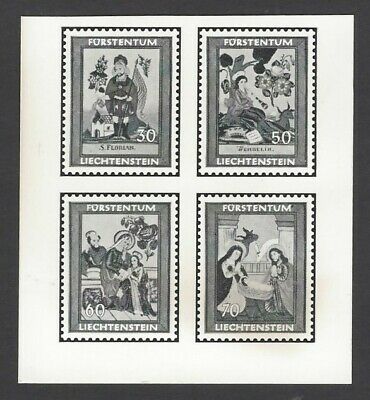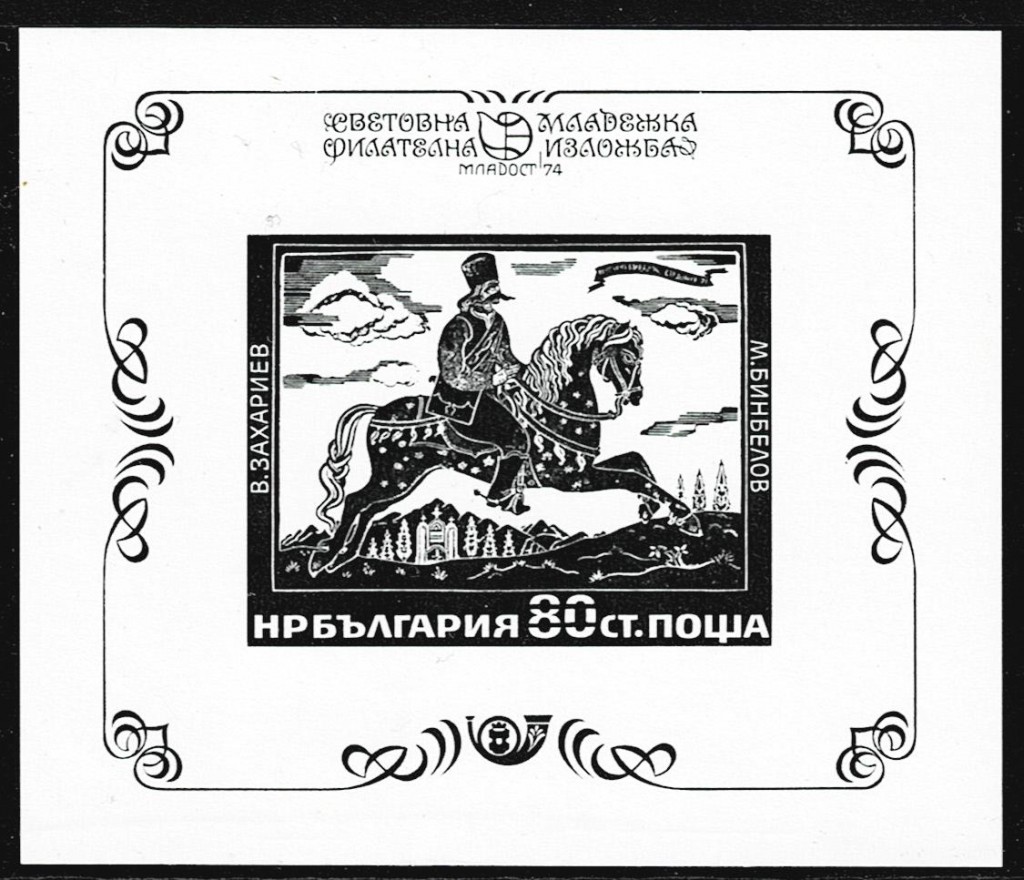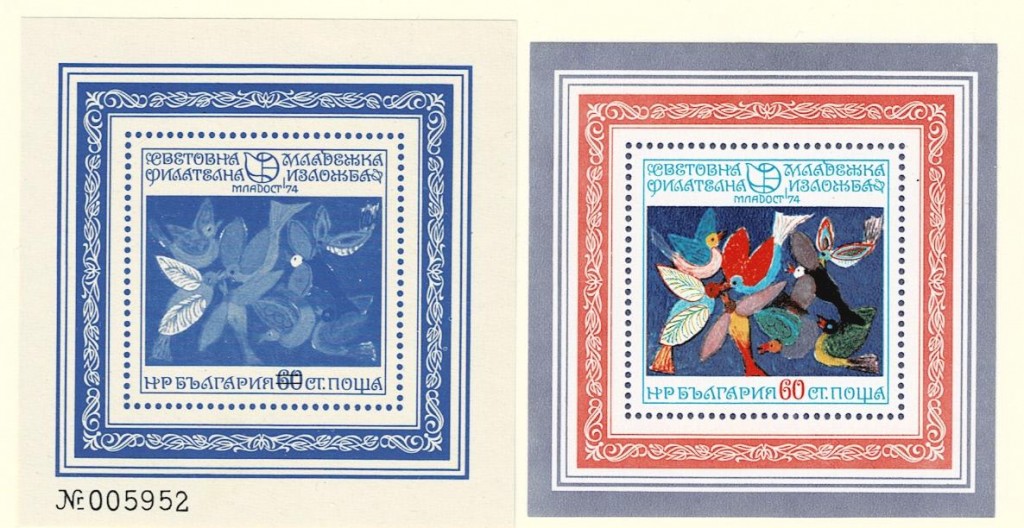|
|
Post by dgdecker on Jan 10, 2020 17:36:43 GMT
I have found several listings on EBay selling composite photographic proofs. I have never hear of this term relating to stamps. so far I have found the listings for Luxembourg, Liechtenstein, and Andorra. To me they are just black and white enlargements of modern stamps . Starting bids are about $15US One image is below. Thanks for any clarification. David  |
|
brightonpete
Departed
Rest in Peace
On a hike at Goodrich-Loomis
Posts: 5,110 
|
Post by brightonpete on Jan 10, 2020 18:25:14 GMT
Wow, I could make a fortune selling these.
Don't anyone cut in on my business model!
|
|
vikingeck
Member 
Posts: 3,551
What I collect: Samoa, Tobacco theme, Mail in Wartime, anything odd and unusual!
|
Post by vikingeck on Jan 10, 2020 18:47:32 GMT
I think the “Composite” refers to the fact that there are 4 images of the set .
I believe that prior to internet in the 1960s - 1980s many postal authorities produced these black and white images as publicity press releases when they had a new issue scheduled .
|
|
tomiseksj
Moderator  Woodbridge, Virginia, USA
Woodbridge, Virginia, USA
Posts: 6,385  What I collect: Worldwide stamps/covers, Cinderellas, Ohio Prepaid Sales Tax Receipts, U.S. WWII Ration ephemera
What I collect: Worldwide stamps/covers, Cinderellas, Ohio Prepaid Sales Tax Receipts, U.S. WWII Ration ephemera
|
Post by tomiseksj on Jan 10, 2020 21:45:15 GMT
The print industry, at least in the U.S., defines a composite proof as being a color proof showing all of the final copy, graphics, type and color separations.
An ebay search for "composite photographic proof" returns well over 200 items, almost entirely being offered by the Indian seller alphaomegaphilately, and all appear to be printed in grayscale.
|
|
|
|
Post by dgdecker on Jan 11, 2020 2:24:43 GMT
Is there a market for these?
if you can have a real stamp , why would you want one?
would there be any way to know if these are modern reproductions? Or authentic?
David
|
|
hrdoktorx
Member 
Posts: 7,215
What I collect: France (and French territories), Africa, Canada, USA, Germany, Guatemala, stamps about science, flags, maps, stamps on stamps...
|
Post by hrdoktorx on Jan 11, 2020 7:19:32 GMT
I have found several listings on EBay selling composite photographic proofs. I have never hear of this term relating to stamps. so far I have found the listings for Luxembourg, Liechtenstein, and Andorra. To me they are just black and white enlargements of modern stamps . Starting bids are about $15US Such things also exist in Germany. I have a couple of them, obtained from the Greifswald stamp club when I belonged to it back then. These are photographic proofs of the stamps as a 4-block. The German name for these is "Schwarzdruck" (which translates roughly as "black print"). |
|
vikingeck
Member 
Posts: 3,551
What I collect: Samoa, Tobacco theme, Mail in Wartime, anything odd and unusual!
|
Post by vikingeck on Jan 11, 2020 9:23:44 GMT
The print industry, at least in the U.S., defines a composite proof as being a color proof showing all of the final copy, graphics, type and color separations. An ebay search for "composite photographic proof" returns well over 200 items, almost entirely being offered by the Indian seller alphaomegaphilately, and all appear to be printed in grayscale. Whilst I accept Steve's print industry definition as technically correct , I think these are items of a different provenance entirely. These are just publicity Black and white photos issued as press release for magazine / stamp journal reproduction in days before internet images, so that NEW ISSUE information could appear in the philatelic press. It would be incorrect to describe them as proofs, they have no relation to the print stages. The size is wrong, they are just photos of the finished articles ,perf as issued. |
|
brightonpete
Departed
Rest in Peace
On a hike at Goodrich-Loomis
Posts: 5,110 
|
Post by brightonpete on Jan 11, 2020 15:31:42 GMT
And "black prints", widely issued in souvenir books or packs, are (at least to me) a come-on to sell more product. Having them only in year books means more revenue! I have a few from Luxembourg when I bought a few year packs. They are somewhat interesting, but hold no postal value. But at least they are officially printed and issued. The photo in the top post looks just like that. A photo. Anyone could make that up. Even me! Here is one example of the Luxembourg 2007 Christmas semi-postal and black print, still in its original folder. I have yet to mount them in an album. I was going to collect them all until I decided to stop at 2000. 4 year packs, one mounted, the rest? Meh... one of these days! |
|
Londonbus1
Moderator  Cinderella Stamp Club Member 3059
Cinderella Stamp Club Member 3059
Posts: 5,064  What I collect: Wonderland; 1912 Jubilee International Stamp Exhibition, London ('Ideal' Stamp, ephemera); French Cinderellas with an emphasis on Poster Stamps; Israel and Palestine Cinderellas ; Jewish National Fund Stamps, Labels and Tags; London 2010, A Festival of Stamps (anything); South Africa 1937 Coronation issue of KGVI, singles or bi-lingual pairs.
What I collect: Wonderland; 1912 Jubilee International Stamp Exhibition, London ('Ideal' Stamp, ephemera); French Cinderellas with an emphasis on Poster Stamps; Israel and Palestine Cinderellas ; Jewish National Fund Stamps, Labels and Tags; London 2010, A Festival of Stamps (anything); South Africa 1937 Coronation issue of KGVI, singles or bi-lingual pairs.
|
Post by Londonbus1 on Jan 11, 2020 15:44:12 GMT
I've never heard of a composite Photographic proof. I have heard of a composite design. I have heard of a Press Photograph I have heard of a Proof. I have heard of a Blackprint. Here are a couple of items from Bulgaria, Black & Blue.   |
|
de61
Member 
Posts: 262
|
Post by de61 on Jan 15, 2020 22:32:52 GMT
The print industry, at least in the U.S., defines a composite proof as being a color proof showing all of the final copy, graphics, type and color separations. An ebay search for "composite photographic proof" returns well over 200 items, almost entirely being offered by the Indian seller alphaomegaphilately, and all appear to be printed in grayscale. Whilst I accept Steve's print industry definition as technically correct , I think these are items of a different provenance entirely. These are just publicity Black and white photos issued as press release for magazine / stamp journal reproduction in days before internet images, so that NEW ISSUE information could appear in the philatelic press. It would be incorrect to describe them as proofs, they have no relation to the print stages. The size is wrong, they are just photos of the finished articles ,perf as issued. I agree with vikingeck's explanation. These photographic proofs were created for reproduction in publications. While they are not technically proofs, the images needed to be high quality "proof-like" grayscale images on non-reflective paper stock in order for them to be clearly re-produced in publications. These photographic proofs were considered to be "camera ready."
Many newspapers, even up through the 1990s, had a weekly stamp collecting column. As most newspapers use an offset printing process on low-quality newsprint, the original photographs and artwork had to be of high quality to print clearly.
The process used to create newspapers at the time involved the creation of a paste-up page on non-photo blue layout paper. As this process is obsolete, I was only able to find one example of it online.

When a newspaper page was complete, known as a mechanical paste-up, it was camera ready. The page would be photographed through a lithographic screen and transferred to a printing plate, thereby creating an offset negative on the plate. During the printing process, the negative image from the plate is transferred to a transfer roller and then onto the newsprint, creating a positive image on the final printed newspaper page.
As there are several opportunities for picture quality to be lost in the printing process, the original image must be of high quality. On a genuine photographic proof, the ink will almost appear to be sitting on top of the paper. The paper will also be very flat and have the appearance of magazine paper, but without being as shiny as magazine paper.
|
|